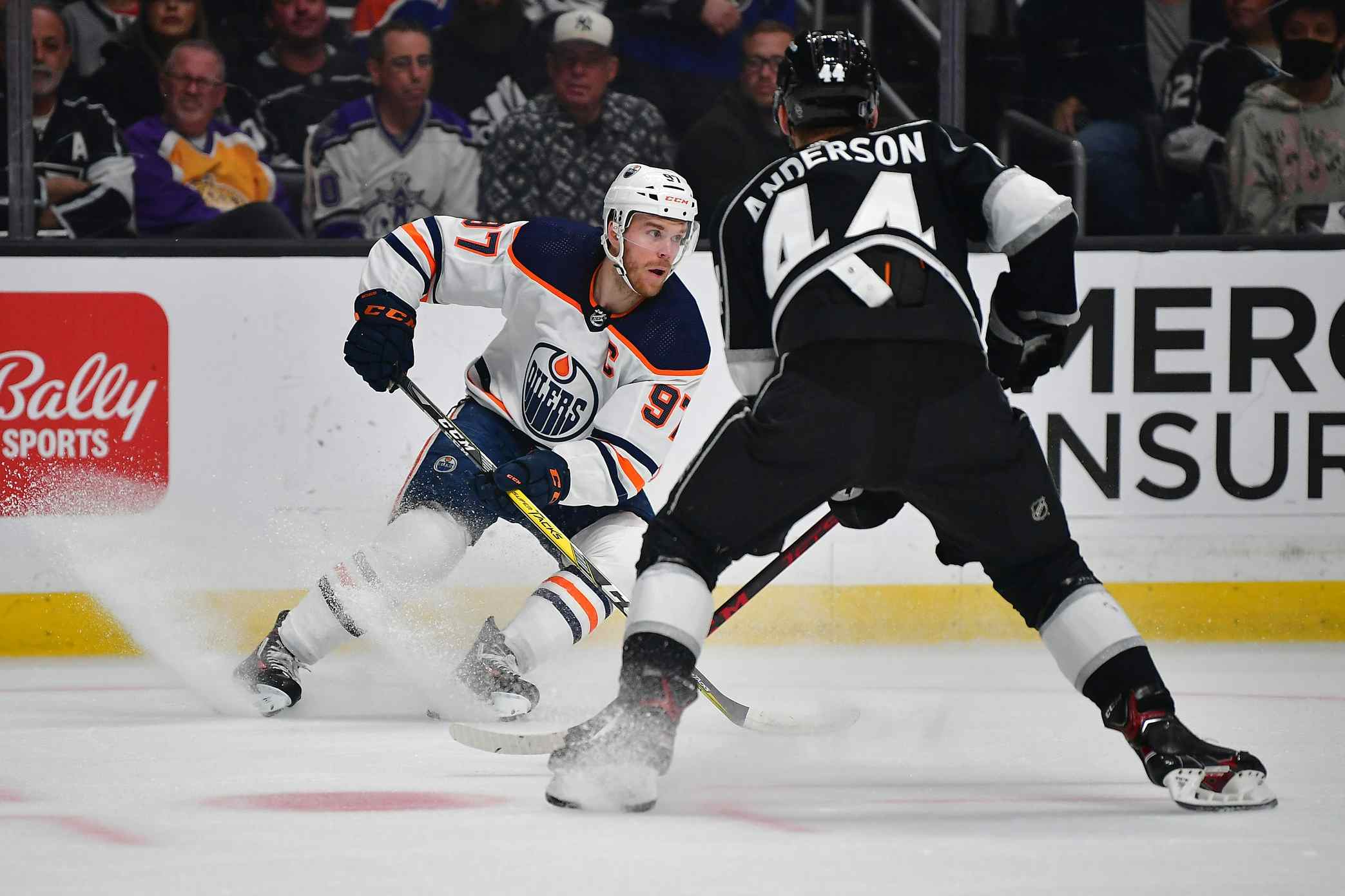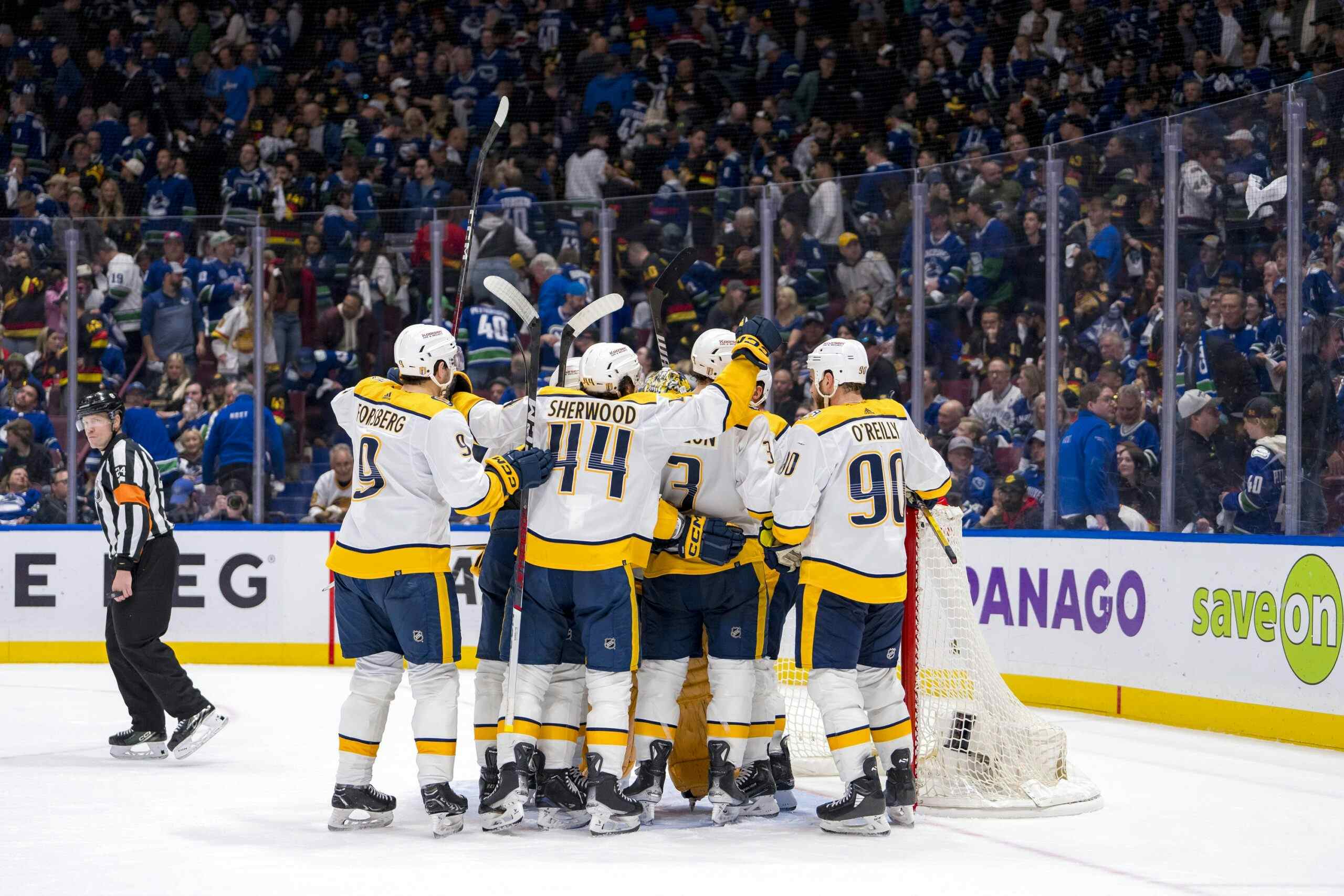Armchair GM 2020: Dealing with the Oilers’ impending free agents

By Cam Lewis
4 years agoThough a salary cap ceiling hasn’t been set for the 2020-21 season, logic indicates that it’ll remain flat for the next few years due to the revenue lost during the COVID-19 pandemic. As a result, the off-season is going to be a lot more difficult for many teams than expected.
Over the next three days, I’m going to take a step-by-step look at the off-season that Ken Holland has ahead of him. Today, we’ll start with Edmonton’s impending restricted and unrestricted free agents.
Holland will head into the 2020 off-season with 10 forwards, five defencemen, and one goalie signed and roughly $70 million committed to the salary cap. There are three key restricted free agents from the NHL roster in need of new deals, a handful of other unrestricted free agents to make decisions on, and a couple of top prospects knocking on the door for an opportunity in the NHL. Some difficult decisions are ahead.
The restricted free agents
The recently acquired Andreas Athanasiou is a restricted free agent this summer with one more year left of team control before he can hit the open market as an unrestricted free agent. Holland gave up two second-round picks to acquire Athanasiou, a player he knows well from his time in Detroit. You have to assume the plan was for Athanasiou to be an Oiler for the foreseeable future.
After scoring 30 goals in 2018-19, Athanasiou had a disappointing follow-up season in 2019-20, scoring just 10 goals in 46 games with Detroit before getting shipped to Edmonton at the trade deadline. Rather than cashing in as a 30-goal guy, he’s now negotiating as a reclamation project. The fact he had a whopping minus-46 rating doesn’t help his cause either. I would expect a two-year deal worth $3,500,000 for Athanasiou this summer, a slight raise on his last deal given the fact it eats up one free agent year.
Also with one more year left of team control is Matt Benning, the quietly solid, perenially underrated defender. Benning missed a decent chunk of time this season due to injury, resulting in a career-low in offensive production with just one goal and eight points in 43 games. Still, Benning has carved out a nice niche on the Oilers as a third-pairing defenceman. When playing in that role, Benning has consistently a positive on-ice goal and shot attempt differential. It may not be flashy, but that’s exactly what you want from a third-pairing defender.
The issue for Benning is that he was jumped on the depth chart this season by Ethan Bear and that Evan Bouchard, the organization’s top defenceman prospect, appears NHL ready. Benning is coming off a two-year deal that paid him $1,900,000 annually and he’ll be due a raise on his next contract. Can the Oilers afford to pay their seventh defenceman more than $2,000,000 annually? I like what Benning brings, but the best play might be dealing him to recoup draft assets and using a cheaper defender in that role.
Next up, we have the aforementioned Ethan Bear, who enjoyed an incredibly impressive breakout season this year. Bear earned a roster spot out of training camp, capitalized on an opportunity that opened for him when Adam Larsson went down with an injury, and never looked back, establishing himself as a top-four defenceman and a key part of the team’s future moving forward.
A few months ago, I talked about Bear’s next contract and how the Oilers could opt to lock him into a team-friendly long-term deal despite the small sample size he has at the NHL level. The team did so with Oscar Klefbom and it worked out wonderfully. That said, having less cap room to work with than expected could make this difficult to execute and Holland might need to settle on a cheaper, two-year bridge deal.
Finally, we have William Lagesson, who sits sort of in limbo right now. He had a very successful season in his rookie year in Bakersfield last year and earned himself an eight-game cup of coffee with the Oilers this year. The issue for Lagesson is the volume of players the Oilers have ahead of him on the depth chart have made it difficult for him to get an extended look.
This summer, he’ll be coming off his entry-level deal and will be in line for a deal akin to what Caleb Jones signed a few months back, which was two years at $850,000 annually. The issue is that Lagesson is waiver-eligible next season and, given the current composition of the roster, his spot is far from guaranteed.
Beyond those four, Holland will also have to make decisions on a handful of minor-leaguers who are set to become RFAs this summer.
Ryan Kuffner is the AHLer who also came from Detroit in the Athanasiou trade. He scored just 11 points in 33 AHL games but had an impressive NCAA career at Princeton. Holland is the one who signed him with the Red Wings, so he might see something here. Nolan Vesey, who the Oilers acquired from the Maple Leafs in exchange for a seventh-round pick a couple of years ago, has spent two seasons in the Oilers organization bouncing between the AHL and ECHL. I doubt he gets another contract.
Defenceman Logan Day had a very solid rookie season for the Condors in 2018-19, scoring 34 points in 64 games, but struggled with injuries and didn’t take a step forward this year. He’s probably worth taking another gamble on. Ryan Mantha hasn’t played a game over the last two seasons due to a blood clot. It’s an unfortunate situation, but I doubt the Oilers will gamble on him.
Goaltender Angus Redmond, who the Oilers acquired from Anaheim in a swap for Joel Persson, will have his entry-level deal expire this summer. With Oliver Rodrigue, Stuart Skinner, and Dylan Wells already under contract next year, it’s hard to imagine Redmond getting another NHL contract.

Mar 3, 2020; Dallas, Texas, USA; Edmonton Oilers left wing Tyler Ennis (63) in action during the game between the Stars and the Oilers at the American Airlines Center. Mandatory Credit: Jerome Miron-USA TODAY Sports
The unrestricted free agents
Holland’s first summer at the helm of the organization was spent using the little cap room he had available signing cheap, low-risk scratch tickets with the intention of raising the roster’s floor and improving its depth. Quite a few of these players worked out. Two of them, Joakim Nygard and Josh Archibald, already have deals for next year. Who else will be brought back?
Riley Sheahan is a player Holland knows well, as he drafted and developed him in Detroit. Sheahan doesn’t bring much offensively, but he was instrumental in improving Edmonton’s penalty kill. I would be shocked if he wasn’t re-signed, though he’ll be due a raise on his one-year, $900,000 deal.
Gaetan Haas is an interesting case. He was solid for the Oilers in his rookie year in North America, posting five goals and 10 points in 58 games despite playing under 10 minutes per night. In a new, modern NHL, the speedy and tenacious Haas has the ideal skillset for a bottom-six role.
The issue with Haas is that he isn’t good on draws and he doesn’t kill penalties, so he might not fit into Dave Tippett’s idea for Edmonton’s bottom-six. Personally, I would love to see Haas return for another season, but I also wouldn’t be shocked if it didn’t happen. Patrick Russell might be more likely to return for that reason. Though Russell didn’t score a single goal in 45 games, he can help out on the penalty kill.
Acquired at the trade deadline, bringing back Tyler Ennis seems like a no-brainer for me. He’s a local guy and he seemed to gel really nicely with Connor McDavid in the limited sample size we saw of them together. Ennis brings flexibility as he can keep up in a top-six role but he can also provide as a bottom-six player. The only issue here is that he’ll have plenty of options coming off of a 16-goal, 36-point season.
Mike Green, another deadline pick-up, has only played two games with the Oilers, but, again, Holland knows him well from his time in Detroit. Given his age and how bad his 2019-20 season was, Green would be very cheap to bring back on a one-year deal. If the team moves on from somebody like Matt Benning in a trade, Green could return to serve as veteran depth on the blueline.
The really difficult decision is Mike Smith. He looked like he was toast in December but put together an amazing stretch after the turn of the new year, going 12-3-4 with a .911 save percentage.
If the salary cap had gone up and Holland had more room to work with, upgrading on Smith in free agency would have made a lot of sense. But Holland likely won’t have much wiggle room, so banking on Smith’s strong second half might be the easiest play. He’s a unique goalie in the way that he adds veteran leadership to the team.
In terms of AHL UFAs, we can assume that Markus Granlund and Brandon Manning will move on this summer. Tomas Jurco could get another look, as he was mostly injured this year, but it’s doubtful. Brad Malone and Josh Currie are strong bets to return as AHL veterans. Another one that’s up in the air is goaltender Shane Starrett, who might get shoved out in favour of younger prospects.
What say you, Nation? Who should be brought back next season and who should be let go?
Recent articles from Cam Lewis





